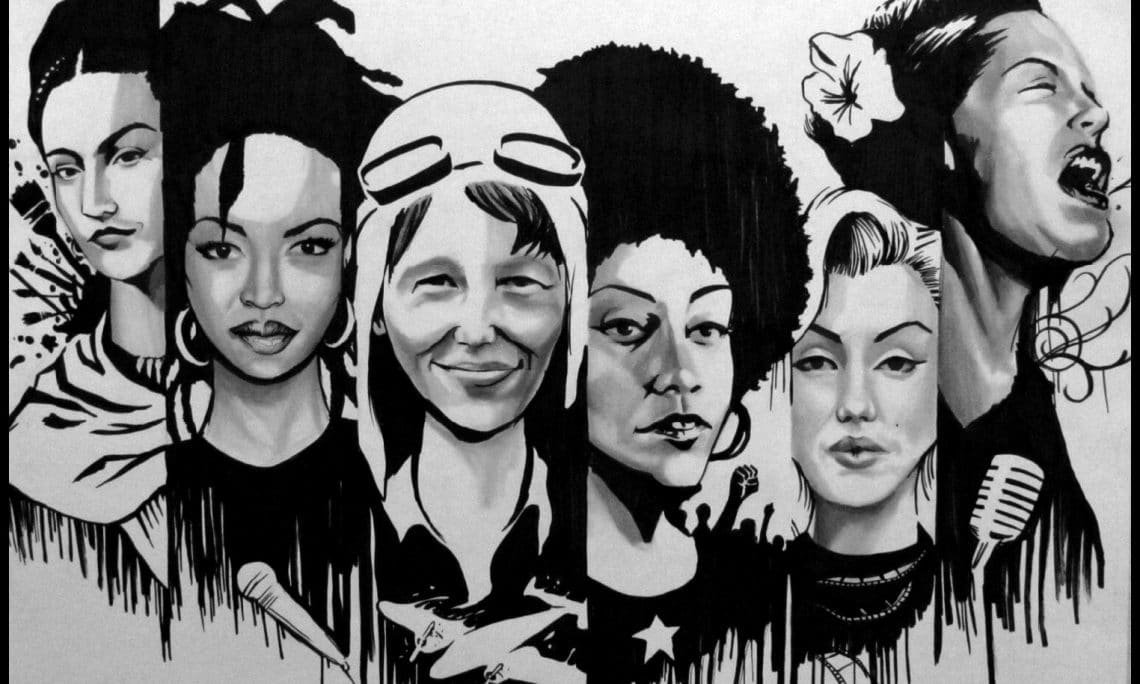Co-authored with Scott Douglas Jacobsen
As the month of March slowly winds down, we are approaching the end of Women’s History Month, a month dedicated in some parts of the world to celebrating and marking the contributions of women throughout human history. Readers will find fewer mentions on their social media feeds of famous women. Amongst these fascinating titbits, and in light of the backlash against the women’s movement all over the world, the significance of this attempt at inclusive memory, its origins and its purpose become ever more poignant. Why celebrate an entire month as Women’s History Month? Does that imply a deliberate conspiracy by historians to suppress women? Or is the rationale that women’s role in history has been forgotten by accident? Did the proponents of this idea believe that women’s role has been overwhelmed in collective memory by subconscious beliefs that are more subtle, yet simultaneously more insidious? How did it all begin?
According to the National Women’s History Project, in the article entitled the “History of National Women’s History Month,” the foundational ideas of Women’s History Month span back over a century ago, at least, with the first International Women’s Day. At least in America, some of this began with the foundation of the National Women’s History Project in Santa Rosa, California.
It was the pioneering work of Molly Murphy MacGregor, Mary Ruthsdotter, Maria Cuevas, Paula Hammett and Bette Morgan which developed the open portrayal of women’s achievements, unabashedly. Based on some of their work, and in part due to the work of the National Women’s History Project through leading a coalition, the movement grew in strength and took shape. Originally, only a week was dedicated to this commemoration and was chosen to coincide with International Women’s Day in March 8th. In 1987, after being petitioned by the National Women’s History Project, the entire month of March was authorised in the U.S as National Women’s History Month.
The American example is not a random sampling, or an unimportant one. Much of what happened in the United States did bleed out into other places in the world, and provided a space for open conversation about women’s accomplishments and to learn about female exemplars – some known, others completely unknown, and who may never have been known in history. In the process of this project, there came stories of bravery and valour, of sacrifice and leadership, of indispensable contributions that made some of the greatest discoveries possible. Today, with the movement of gender equality having made great strides, does this movement and its importance continue to hold sway? Or is it part of an attempt to push a female-centred narrative into mainstream reflection of society?
To understand the importance of commemorating a whole month as Women’s History Month, one needs to first be aware of the idea that women and their contributions to history can be overlooked or forgotten because of the way traditional power relations have worked. Now, this may sound, to some, like a conspiracy theory concocted by feminist thought, but a simple example can serve to illustrate just how believable this is.
Sandi Toksvig, a well-known author and radio broadcaster, when discussing the launch of her book ‘Girls are Best’ described how she came to realise that the forgotten contributions of women were probably all around her. While in Cambridge, she reported, an anthropology Professor held up the picture of a bone with 28 incisions carved on it. “This is considered to be man’s first attempt at a calendar,” the Professor had said while students dutifully wrote it down. The Professor then stunned them with a follow-up comment – “My question to you is this: What man needs to mark 28 days? I would suggest that this is a woman’s first attempt at a calendar”. That lesson, Toksvig reports, changed her life and the way she saw the world, and made her question everything she knew about the past.
The simplicity of that lesson, and it’s significance is undeniable. If one were to successfully imagine the state of emptiness and lack of knowledge in which prehistoric men would have found themselves, this theory makes perfect sense – not just to historians, but as a matter of rational inference. It is overwhelmingly possible that it was the woman who needed to mark 28 days, and therein began the idea of months.
But it is not just in terms of tangible and direct contributions that the role of women has been forgotten or glossed over. There are other instances where celebrated achievements would not have been possible had it not been for women, that Women’s History Month seeks to memorialise. The most obvious of these, is of course the development of modern gynaecology. J. Marion Sims, a South Carolinian, is today championed as the Father of Modern Gynaecology, and statues of him dot the landscape of medical campuses. These celebrations of his memory, until recently, omitted the lives and names of the enslaved women that he experimented on, in order to arrive at and perfect his ‘revolutionary’ ideas for treating women’s diseases. Today, only three names have survived the tides of history – Anarcha, Lucy and Betsey, their pain and suffering mere echoes. Very little information survives about what was done to them, and how many of their babies were lost in the process.
This erasure of women in the annals of human history, whether intentional or unintentional, continues to this day. It is not only in fading history books that women and their contributions were forgotten, but coverage of women’s history in online encyclopaedias was so thin that Wikipedia initiated the WikiProject Women’s History, a collaboration area for Wikipedians interested in improving coverage of women’s history. The project’s primary purpose is to provide support for members and any other editors in improving Wikipedia’s coverage of women from a historical perspective.
But woman’s history is not just about the battles they fought and the countries they ruled. As Tracey Mccormick insightfully divines in Famous Women in History, the history of women is often a secondary and less dramatic history; of serving tea at document-signings, caring for men wounded in battle, standing off to the side at men’s election victories, designing new farming techniques, and keeping populations alive during profound periods of starvation and famine. In that sense women’s history is about the 99.9% of things happening outside the battles and conquests and therefore, is closer to the lives of ordinary people than regular history. By studying these footnotes in history, we benefit from a richer perspective of how and why human society developed the way it did, and the wisdom of those whose lives got lost in the background noise.
The celebration of women’s history month today serves a twofold purpose. One, of course, is to highlight and make a conscious effort to remember and unearth the contributions of women throughout history. The second is to remind us of the necessity to be self-aware of how dominant narratives of a society’s existence can so often, willingly or not, blanket other, equally important stories because they are not deemed important enough. It tells us that history’s value lies not just in its facts, but in its path and process, in knowing how events can be expected to take shape. It holds us accountable to the less dominant groups in our society, and turns our attention to their lives and their invisible, but indispensable contributions.








Article Discussion